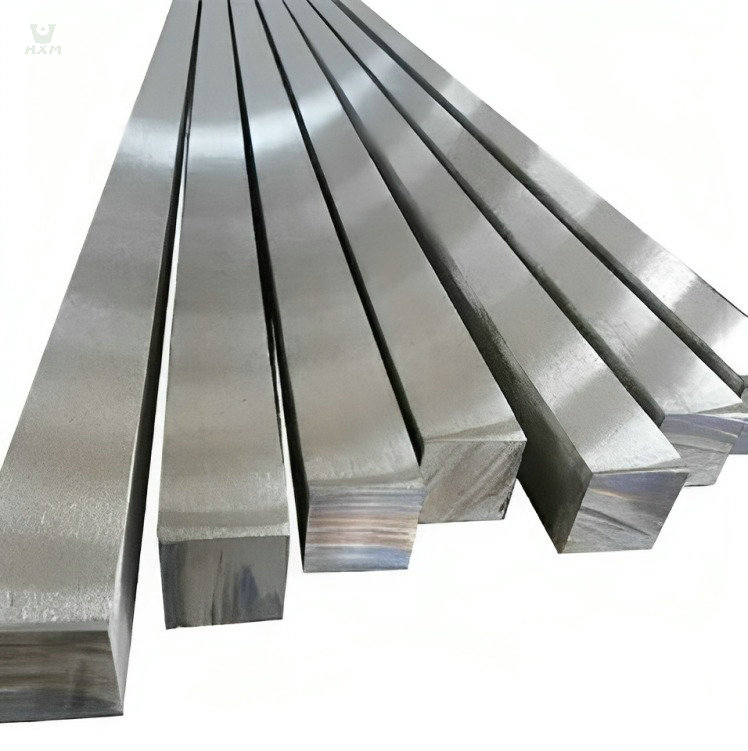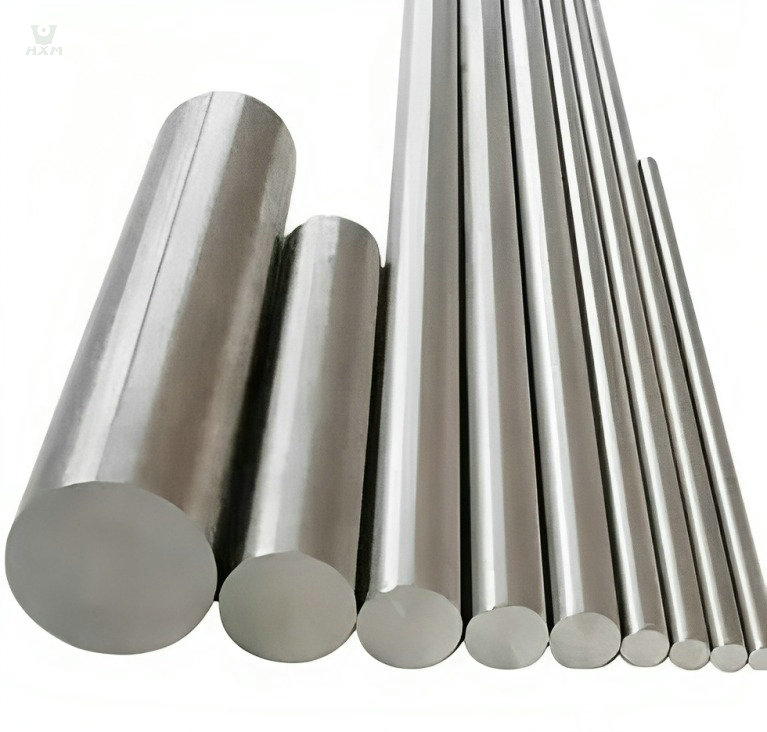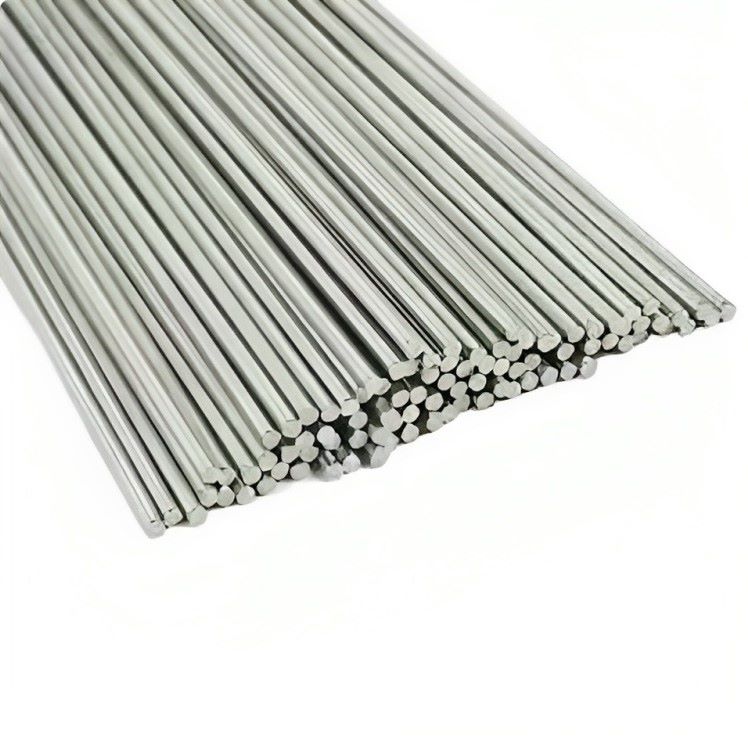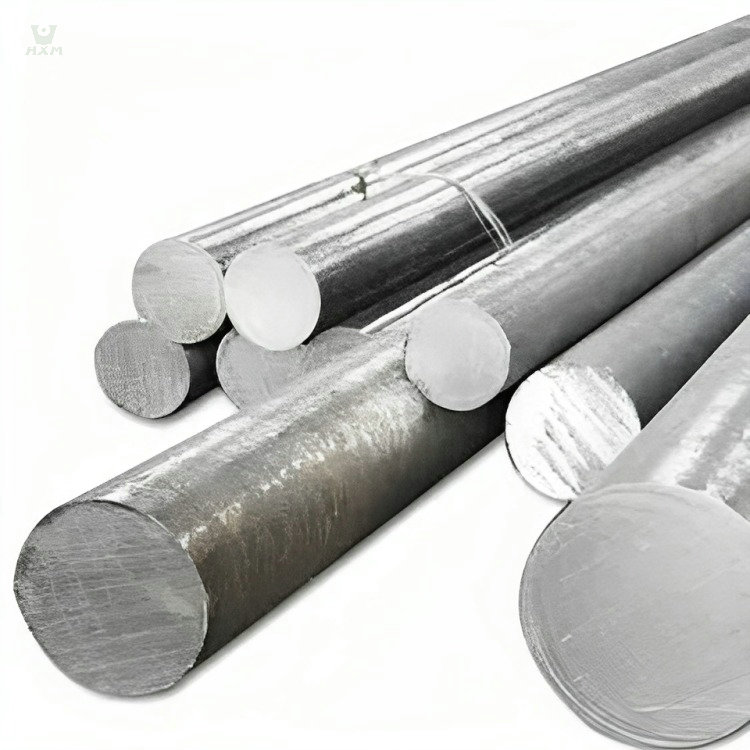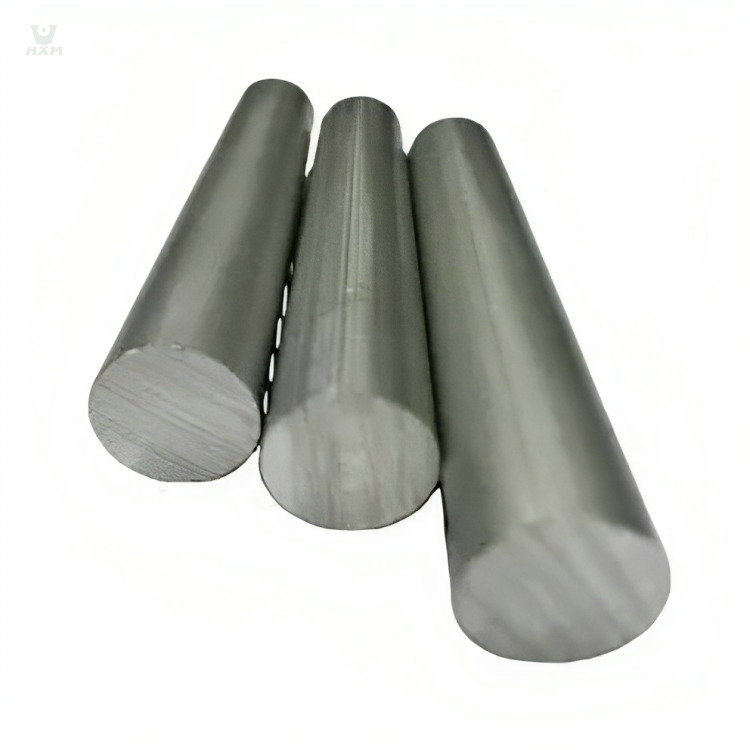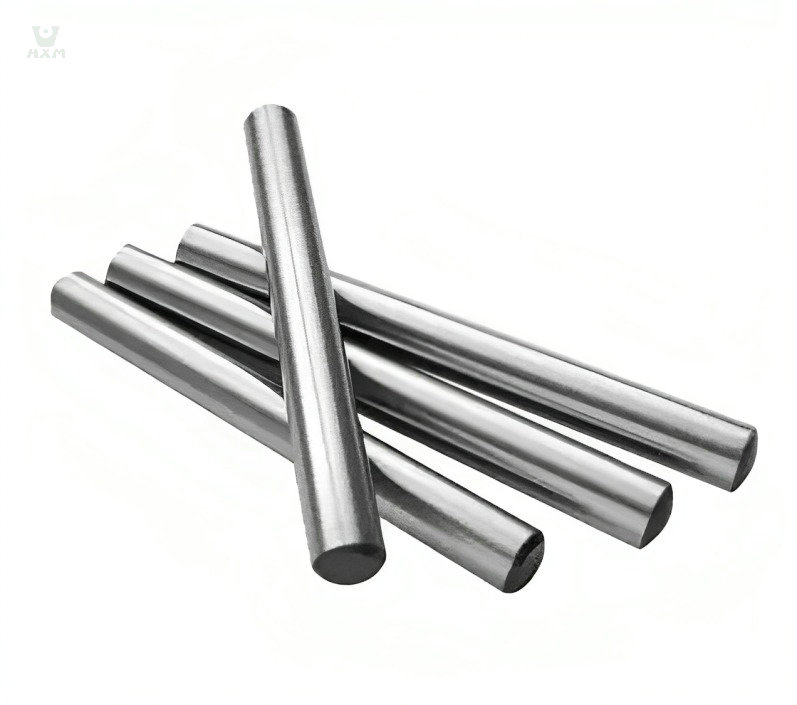Stainless Steel Hexagonal Bar Supplier
Size : 3mm-200mm, 1/8″ to 8″
Standard: GB1220, ASTM A 484/484M, EN 10060/ DIN 1013 ASTM A276, EN 10278, DIN 671
Main Grade: 201, 304, 316, 316L, 310s, 430
Finish: Black, NO.1, mill finish, cold draw
Product Description Of Stainless Steel Hexagonal Bar
In terms of stainless steel bar rolling standards, the US, UK, Germany, France, Russia, Japan, and international standards are more advanced, and the US standard size tolerance is the most stringent. The latest standards for national stainless steel hot-rolled profiles are ASTMA276 “Standard Specification for Stainless Steel and Heat-Resistant Steel Bars and Profiles”; American ASTM 484/A484M “General Requirements for Stainless Steel and Heat-Resistant Steel Bars, Billets and Forgings”; German DIN17440 “Technical Conditions for Delivery of Stainless Steel Sheet, Hot Rolled Strip, Wire, Drawn Wire, Steel Bar, Forging and Billet”; Japan JlS64304 “Stainless Steel Rod”.
In the early 1980s, China combined the standards of the United States, Japan, Germany, the former Soviet Union, and the International Organization for Standardization (ISO), focused on the Japanese JIS stainless steel rod standards, and formulated the national standard GB1220-92 for stainless steel bars, with reference to foreign countries. Standards, the national standard GB4356-84 for stainless steel wire rods has been formulated, which makes the steel series more perfect, and adopts internationally-used brands such as the United States and Japan.
Some stainless steel grades in China correspond to American standard grades, as shown in Table 1. At the same time, it retains the commonly used grades in China, which is basically consistent with the stainless steel grades of developed countries such as the United States and has greater versatility. Compared with developed countries, the gap between the standards itself has shrunk a lot, but the surface quality and dimensional tolerances are poor, and the difference in physical level is large.
specification Of Stainless Steel Hexagonal Bar
Main grade description in different standard
ASTM | DIN / EN | JIS | GB | ISO Name | Other |
S20100 201 | 1.4372 | SUS201 | S35350 | X12CrMnNiN17–7-5 | J1 L1 LH 201J1 |
S20200 202 | 1.4373 | SUS202 | S35450 | X12CrMnNiN18–9-5 | 202 L4, 202 J4, 202 J3 |
S30400 304 | 1.4301 | SUS304 | S30408 | X5CrNi18-10 | 06Cr19Ni10 0Cr18Ni9 |
S31603 316L | 1.4404 | SUS316L | S31603 | X2CrNiMo17-12-2 | 022Cr17Ni12Mo2 00Cr17Ni14Mo2 |
S40900 409 | – | SUH409 | S11168 | X5CrTi12 | 0Cr11Ti |
S40910 409L | 1.4512 | SUH409L | S11163 | X2CrTi12 | 00Cr11Ti 022Cr11Ti |
S41008 410S | 1.4000 | SUS410S | S11306 | X6Cr13 | – |
S43000 430 | 1.4016 | SUS430 | 10Cr17 | X6Cr17 | 1Cr17 |
Main grade chemical components in different standard
201 | C % | Si% | Mn % | P % | S % | Ni % | Cr % | N % | Mo % |
ASTM | 0.15 | 1.00 | 5.5-7.5 | 0.050 | 0.030 | 3.5-5.5 | 16.0-18.0 | 0.25 | – |
DIN/EN | 0,15 | 1,00 | 5,5-7,5 | 0,045 | 0,015 | 3,5-5,5 | 16,0-18,0 | 0,05-0,25 | – |
JIS | 0.15 | 1.00 | 5.5-7.5 | 0.060 | 0.030 | 3.5-5.5 | 16.0-18.0 | 0.25 | – |
GB | 0.15 | 1.00 | 5.5-7.5 | 0.050 | 0.030 | 3.5-5.5 | 16.0-18.0 | 0.05-0.25 | – |
202 | C % | Si% | Mn % | P % | S % | Ni % | Cr % | N % | Mo % |
ASTM | 0.15 | 1.00 | 7.5-10.0 | 0.060 | 0.030 | 4.0-6.0 | 17.0-19.0 | 0.25 | – |
DIN/EN | 0,15 | 1,00 | 7,5-10,5 | 0,045 | 0,015 | 4,0-6,0 | 17,0-19,0 | 0,05-0,25 | – |
JIS | 0.15 | 1.00 | 7.5-10.0 | 0.060 | 0.030 | 4.0-6.0 | 17.0-19.0 | 0.25 | – |
GB | 0.15 | 1.00 | 7.5-10.0 | 0.050 | 0.030 | 4.0-6.0 | 17.0-19.0 | 0.05-0.25 | – |
304 | C % | Si% | Mn % | P % | S % | Ni % | Cr % | N % | Mo % |
ASTM | 0.08 | 0.75 | 2.00 | 0.045 | 0.030 | 8.0 – 10.5 | 18.0-20.0 | 0.10 | – |
DIN/EN | 0,07 | 1,00 | 2,00 | 0,045 | 0,015 | 8,0 – 10,5 | 17,5-19,5 | 0,10 | – |
JIS | 0.08 | 1.00 | 2.00 | 0.045 | 0.030 | 8.0 – 10.5 | 18.0-20.0 | – | – |
GB | 0.08 | 1.00 | 2.00 | 0.045 | 0.030 | 8.0 – 10.0 | 18.0-20. 0 | – | – |
316L | C % | Si% | Mn % | P % | S % | Ni % | Cr % | N % | Mo % |
ASTM | 0.030 | 0.75 | 2.00 | 0.045 | 0.030 | 10.0-14.0 | 16.0-18.0 | 0.10 | 2.00-3.00 |
DIN/EN | 0,030 | 1,00 | 2,00 | 0,045 | 0,015 | 10,0-13,0 | 16,5-18,5 | 0,10 | 2,00-2,50 |
JIS | 0.030 | 1.00 | 2.00 | 0.045 | 0.030 | 12.0-15.0 | 16.0-18.0 | – | 2.00-3.00 |
GB | 0.030 | 0.75 | 2.00 | 0.045 | 0.030 | 10.0-14.0 | 16.0-18.0 | 0.10 | 2.00-3.00 |
409 | C % | Si% | Mn % | P % | S % | Ni % | Cr % | N % | Ti % |
ASTM | 0.08 | 1.00 | 1.00 | 0.045 | 0.03 | 0.50 | 10.5-11.7 | – | 6*C% – 0.75 |
DIN/EN | – | – | – | – | – | – | – | – | – |
JIS | 0.08 | 1.00 | 1.00 | 0.040 | 0.030 | – | 10.5-11.7 | – | 6*C% – 0.75 |
GB | 0.08 | 1.00 | 1.00 | 0.045 | 0.030 | 0.60 | 10.5-11.7 | – | 6*C% – 0.75 |
409L | C % | Si% | Mn % | P % | S % | Ni % | Cr % | N % | Ti % |
ASTM | 0.03 | 1.00 | 1.00 | 0.040 | 0.020 | 0.50 | 10.5-11.7 | 0.03 | 6*(C+N)-0.5 |
DIN/EN | 0.03 | 1.00 | 1.00 | 0.040 | 0.015 | – | 10.5-12.5 | – | 6*(C+N)-0.65 |
JIS | 0.03 | 1.00 | 1.00 | 0.040 | 0.030 | – | 10.5-11.7 | – | 6*C% – 0.75 |
GB | 0.03 | 1.00 | 1.00 | 0.040 | 0.020 | – | 10.5-11.7 | 0.03 | Ti≥8*(C+N) |
410S | C % | Si% | Mn % | P % | S % | Ni % | Cr % | N % | Mo % |
ASTM | 0.08 | 1.00 | 1.00 | 0.040 | 0.030 | 0.60 | 11.5-13.5 | – | – |
DIN/EN | 0,08 | 1,00 | 1,00 | 0,040 | 0,015 | – | 12,0-14,0 | – | – |
JIS | 0.08 | 1.00 | 1.00 | 0.040 | 0.030 | – | 11.5-13.5 | – | – |
GB | 0.08 | 1.00 | 1.00 | 0.040 | 0.030 | 0.60 | 11.5-13.5 | – | – |
Main grade mechanical property in different standard
201 | Y.S./Mpa ≥ | T.S./Mpa ≥ | E.L./% ≥ | HB ≤ | HRB ≤ | HBW ≤ | HV ≤ |
ASTM | 260 | 515 | 40 | – | 95 | 217 | – |
JIS | 275 | 520 | 40 | 241 | 100 | – | 253 |
GB | 205 | 515 | 30 | - | 99 | – | - |
202 | Y.S./Mpa ≥ | T.S./Mpa ≥ | E.L./% ≥ | HB ≤ | HRB ≤ | HBW ≤ | HV ≤ |
ASTM | 260 | 620 | 40 | – | – | 241 | – |
JIS | 275 | 520 | 40 | – | 95 | 207 | 218 |
GB | – | – | – | – | – | – | – |
304 | Y.S./Mpa ≥ | T.S./Mpa ≥ | E.L./% ≥ | HB ≤ | HRB ≤ | HBW ≤ | HV ≤ |
ASTM | 205 | 515 | 40 | – | 92 | 201 | – |
JIS | 205 | 520 | 40 | 187 | 90 | – | 200 |
GB | 205 | 515 | 40 | – | 92 | 201 | 210 |
316L | Y.S./Mpa ≥ | T.S./Mpa ≥ | E.L./% ≥ | HB ≤ | HRB ≤ | HBW ≤ | HV ≤ |
ASTM | 170 | 485 | 40 | – | 95 | 217 | – |
JIS | 175 | 480 | 40 | 187 | 90 | 200 | |
GB | 170 | 485 | 40 | – | 95 | 217 | 220 |
409 | Y.S./Mpa ≥ | T.S./Mpa ≥ | E.L./% ≥ | HB ≤ | HRB ≤ | HBW ≤ | HV ≤ |
ASTM | – | – | – | – | – | – | – |
JIS | 175 | 360 | 22 | 162 | 80 | – | 175 |
GB | – | – | – | – | – | – | – |
409L | Y.S./Mpa ≥ | T.S./Mpa ≥ | E.L./% ≥ | HB ≤ | HRB ≤ | HBW ≤ | HV ≤ |
ASTM | 170 | 380 | 20 | – | 88 | 179 | – |
JIS | 175 | 360 | 25 | 162 | 80 | – | 175 |
GB | 170 | 380 | 20 | – | 88 | 179 | 200 |
410S | Y.S./Mpa ≥ | T.S./Mpa ≥ | E.L./% ≥ | HB ≤ | HRB ≤ | HBW ≤ | HV ≤ |
ASTM | 205 | 415 | 22 | – | 89 | 183 | – |
JIS | 205 | 410 | 20 | – | 88 | 183 | 200 |
GB | 205 | 415 | 20 | – | 89 | 183 | 200 |
Production Process and Feature Of Stainless Steel Hexagonal Bar
Bar production line process: billet acceptance → heating → rolling → double shearing → cooling → shearing → inspection → packaging → metering → storage.
Small bars are produced by small mills. The main types of small mills are: continuous, semi-continuous, and horizontal. At present, most of the world’s new and in-use small continuous rolling mills. Today’s popular rebar mills have a universal high-speed rolling rebar mill and a 4-segment high-yield rebar mill. The billet used in the continuous small rolling mill is generally a continuous casting billet, and its side length is generally 130-160 mm, 180 mm×180 mm, the length is generally about 6-12 meters, and the billet weight is 1.5~3 tons.
The rolling lines are mostly arranged in a flat-upright manner, achieving full-line non-torsion rolling. The number of racks is determined by the principle of rolling one rack together. The rolling mills are mostly even-numbered passes. There are 18, 20, 22, or even 24 small mills for different blank sizes and finished sizes, and 18 are the mainstream. Speed-adjustable, micro-tension, and tension-free rolling are the distinguishing features of modern all-continuous small mills. Part of the rough rolling and medium rolling frame is controlled by micro tension. The part of the medium rolling and the finishing mill is tension-free to ensure the dimensional accuracy of the product. Continuous mills generally have 6 to 10 loopers, and even up to 12 loopers.
Bar rolling is the easiest to implement in all rolled materials and can be done in a variety of ways. From three-roller to to-twist, from semi-continuous to full-continuous, bars can be produced, but their yield, dimensional accuracy, finished product, and pass rate are quite different. The rigidity of the three-roll mill is low, and the fluctuation of the heating temperature will inevitably lead to serious product size fluctuations.
In addition, the slow speed of the course and the long rolling time lead to an increase in the temperature difference between the head and the tail of the rolling stock, the size is inconsistent, and the performance is uneven. The output is very low, the quality fluctuates greatly, and the quality rate is extremely low. Full-continuous rolling mills generally adopt flat and alternate, the rolling parts are not twisted, the accidents are small, the output is high, and large-scale professional production and structural performance control can be realized.
At the same time, the rolling mill adopts high rigidity, the control degree is high, and the dimensional precision and pass rate have been greatly improved, especially the yield rate has been increased, and the waste of steelmaking in the return furnace has been reduced. At present, bar rolling is mostly carried out by step-type heating furnaces, high-pressure water descaling, low-temperature rolling, headless rolling, and other new processes. Rough rolling and medium rolling are developed to adapt to large billets and improve rolling precision. Finishing mill Mainly to improve accuracy and speed.
Compared with ordinary carbon steel hot rolling, the rolling technology and process of stainless steel are mainly reflected in the inspection and cleaning of ingots, heating methods, roll hole design, rolling temperature control, and online heat treatment of products.
Features Of Stainless Steel Hexagonal Bar
Durability is a standout feature of stainless steel hexagonal bars. These bars are engineered to withstand the test of time and harsh environmental conditions. Their remarkable durability is primarily attributed to the high-quality stainless steel material used in their construction.
Stainless steel hexagonal bars are inherently resistant to corrosion, rust, and degradation, ensuring that they remain structurally sound and visually appealing even in challenging settings. This durability extends their lifespan, making them a cost-effective and reliable choice for various applications.
Whether exposed to moisture, chemicals, extreme temperatures, or heavy mechanical stress, stainless steel hexagonal bars maintain their integrity and mechanical properties over time. This durability not only enhances their longevity but also contributes to their low maintenance requirements, making them an excellent choice for long-term, dependable performance in diverse industries.
Heat resistance is a noteworthy characteristic of stainless steel hexagonal bars. These bars exhibit exceptional heat tolerance, which makes them suitable for applications in elevated-temperature environments. The heat resistance of stainless steel hexagonal bars can be attributed to their high-quality stainless steel composition.
Even when exposed to high temperatures, stainless steel hexagonal bars retain their structural integrity and mechanical properties. They do not undergo deformation, oxidation, or other forms of deterioration that can compromise their performance. This resilience to heat enables them to maintain their shape and strength, ensuring reliable and safe operation in applications where elevated temperatures are a concern.
This exceptional heat resistance makes stainless steel hexagonal bars valuable in industries such as manufacturing, construction, and engineering, where they can be exposed to extreme heat conditions. It underscores their versatility and reliability in demanding environments, contributing to their widespread use across various sectors.
Stainless steel hexagonal bars are known for their low maintenance requirements. This characteristic makes them a popular choice in various applications where hassle-free operation and minimal upkeep are essential. Their low maintenance needs are attributed to the corrosion-resistant properties of stainless steel.
Stainless steel hexagonal bars are highly resistant to corrosion, which means they are less susceptible to rust and deterioration even in challenging environments. This corrosion resistance significantly reduces the need for frequent cleaning, coatings, or protective measures. As a result, these bars require minimal attention to maintain their appearance and performance over time.
This low maintenance feature is particularly advantageous in industries like construction, architecture, and manufacturing, where components and structures made from stainless steel hexagonal bars can remain in excellent condition with minimal effort. It simplifies the upkeep process and contributes to the long-term durability and cost-effectiveness of stainless steel hexagonal bars in various applications.
Stainless steel hexagonal bars exhibit remarkable impact resistance, making them suitable for applications requiring resistance to mechanical stress and impacts. This characteristic is attributed to the inherent toughness and strength of stainless steel alloys.
Due to their composition and metallurgical properties, stainless steel hexagonal bars can withstand sudden forces and impacts without suffering deformation or structural failure. This quality is particularly important in industries where components are subjected to dynamic loads, vibrations, or accidental impacts.
The high impact resistance of stainless steel hexagonal bars is beneficial in various sectors, including construction, automotive manufacturing, and machinery production. In these applications, the bars can maintain their structural integrity and performance even when exposed to challenging conditions. This attribute contributes to the overall reliability and longevity of components made from stainless steel hexagonal bars, ensuring they can endure rigorous operating environments without compromising safety or functionality.
Stainless steel hexagonal bars are known for their flexibility, which is a result of the inherent ductility of stainless steel alloys. This flexibility allows these bars to be easily shaped, bent, and manipulated to suit various design and manufacturing requirements.
The ability of stainless steel hexagonal bars to flex without losing their structural integrity makes them versatile and adaptable for a wide range of applications. Manufacturers can use them to create intricate and customized components for industries such as construction, automotive, aerospace, and machinery.
Their flexibility is particularly advantageous when it comes to producing complex parts, fasteners, and fittings that need to conform to specific shapes or angles. This property not only enhances the design possibilities but also simplifies the manufacturing process by allowing for easier machining, forming, and welding of the bars.
In summary, the flexibility of stainless steel hexagonal bars provides engineers and designers with the freedom to create intricate and precisely tailored components while maintaining the material’s strength and durability.
Stainless steel hexagonal bars are characterized by high precision, offering tight dimensional tolerances that meet rigorous manufacturing requirements. This precision is a result of meticulous machining and processing techniques applied during their production.
Manufacturers use advanced equipment and technologies to ensure that these bars maintain precise and consistent dimensions. They can achieve a tolerance as low as ±0.01mm at a minimum, providing exacting specifications for various applications.
High precision is a crucial feature when it comes to applications where accuracy and uniformity are essential, such as in the aerospace, automotive, and medical industries. These bars can be relied upon to meet strict standards and deliver consistent performance, making them suitable for critical components, fasteners, and machined parts.
The high precision of stainless steel hexagonal bars contributes to their versatility, allowing engineers and designers to confidently incorporate them into projects that demand tight tolerances and exacting specifications.
Stainless steel hexagonal bars are known for their smooth finish, which enhances their appearance and functionality. This smooth surface is achieved through precise machining and finishing processes during manufacturing.
The smooth finish provides several benefits:
Aesthetic Appeal: The sleek and polished appearance of stainless steel hexagonal bars makes them visually appealing, making them suitable for applications where aesthetics matter, such as architectural and decorative projects.
Corrosion Resistance: The smooth surface minimizes the presence of imperfections or irregularities where corrosion can initiate. This enhances the bars’ overall corrosion resistance, ensuring they maintain their durability even in challenging environments.
Reduced Friction: The smooth finish reduces friction, allowing these bars to move smoothly when used in various mechanical and engineering applications. This characteristic is crucial for components like fasteners and connectors.
Easy Cleaning: The smooth surface is easy to clean and maintain, making it suitable for applications in the food industry, healthcare, and laboratories where hygiene is paramount.
Improved Performance: The absence of surface irregularities ensures consistent and reliable performance, whether in load-bearing structures, machinery, or other applications.
In summary, the smooth finish of stainless steel hexagonal bars not only enhances their appearance but also contributes to their corrosion resistance, reduced friction, ease of maintenance, and overall performance in diverse applications.
Corrosion resistance is a fundamental characteristic of stainless steel hexagonal bars. These bars exhibit exceptional resistance to corrosion, making them suitable for use in various environments and industries where protection against rust and degradation is essential.
Key points about the corrosion resistance of stainless steel hexagonal bars include:
Passive Layer: Stainless steel contains a protective passive layer of chromium oxide on its surface. This layer acts as a barrier, preventing corrosive substances from penetrating and damaging the material. It’s this passive layer that gives stainless steel its corrosion resistance.
Versatility: Stainless steel hexagonal bars can withstand exposure to moisture, humidity, acids, alkalis, and various chemicals without significant degradation. This versatility makes them ideal for applications in industries like chemical processing, marine, and food production.
Longevity: Due to their corrosion resistance, these bars have a longer lifespan compared to other materials that may corrode or rust over time. This longevity leads to cost savings and reduced maintenance efforts.
Hygienic Properties: In industries where hygiene is crucial, such as food processing and pharmaceuticals, stainless steel hexagonal bars’ corrosion resistance ensures they can be easily cleaned and sanitized without compromising their structural integrity.
Outdoor Applications: Stainless steel hexagonal bars are often used in outdoor structures, such as handrails, architectural elements, and infrastructure components, where exposure to weather and environmental factors can lead to corrosion in other materials.
Chemical Resistance: They are also resistant to many aggressive chemicals, making them suitable for storage tanks, pipelines, and equipment used in chemical plants.
In summary, the corrosion resistance of stainless steel hexagonal bars stems from their composition and the protective chromium oxide layer. This resistance ensures the bars can endure harsh conditions, remain structurally sound, and maintain their appearance over time.
High tensile strength is a crucial characteristic of stainless steel hexagonal bars. These bars exhibit exceptional tensile strength, making them ideal for applications where mechanical performance and load-bearing capacity are critical.
Key points about the high tensile strength of stainless steel hexagonal bars include:
Material Properties: Stainless steel hexagonal bars are typically made from austenitic or martensitic stainless steel grades, known for their high tensile strength. These grades have been carefully engineered to offer superior mechanical properties.
Load-Bearing Capacity: Their high tensile strength allows these bars to withstand significant loads, making them suitable for structural components in various industries. They can be used in the construction of buildings, bridges, machinery, and other load-bearing structures.
Resilience: Stainless steel hexagonal bars can endure heavy loads and resist deformation, even under challenging conditions. This resilience ensures that they maintain their structural integrity, contributing to the longevity of the components they are used in.
Safety: In applications where safety is paramount, such as in construction and manufacturing, the high tensile strength of these bars provides an added layer of security, reducing the risk of failure or collapse.
Reduced Material Usage: Their high tensile strength often allows for the use of smaller-sized bars or components, reducing material costs without compromising strength or performance.
Suitability for Precision Components: High tensile strength is particularly valuable when manufacturing precision components like fasteners, bolts, and nuts, where reliability and durability are critical.
In summary, the high tensile strength of stainless steel hexagonal bars is a result of their material composition and manufacturing processes. This property ensures they excel in applications requiring robust mechanical performance and load-bearing capacity, contributing to the safety and longevity of structures and equipment.
application Of Stainless Steel Hexagonal Bar
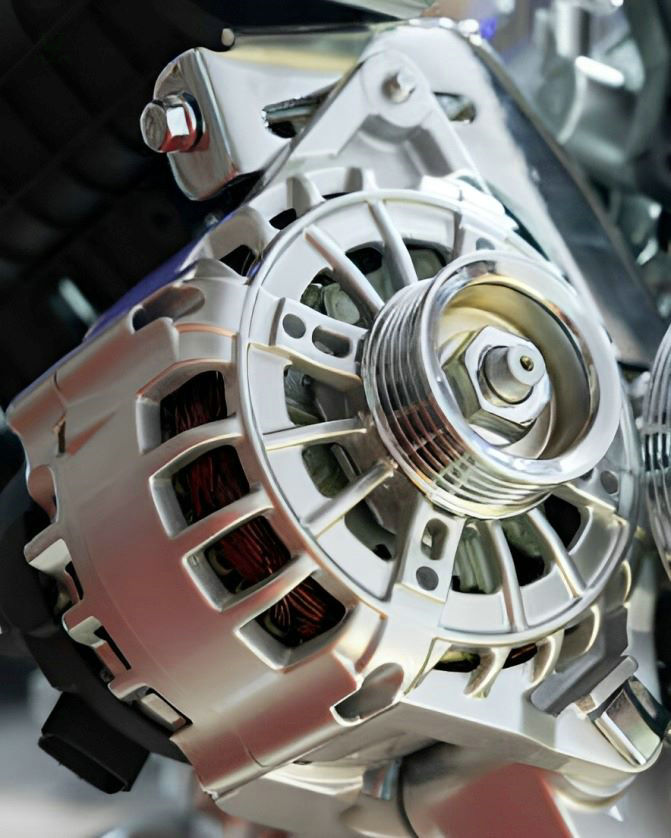
Mechanical Components
Stainless steel hexagonal bars are extensively employed in mechanical components manufacturing due to their exceptional durability and high precision. These bars are specifically preferred for crafting critical components such as hex bolts, hex nuts, and hex plugs. Their superior tensile strength and anti-fatigue properties make them ideal for applications demanding structural integrity and resistance to wear and tear. Whether it's in heavy machinery, automotive parts, or precision instruments, stainless steel hexagonal bars play a crucial role in ensuring the longevity and reliability of mechanical systems, making them a top choice for engineers and manufacturers.
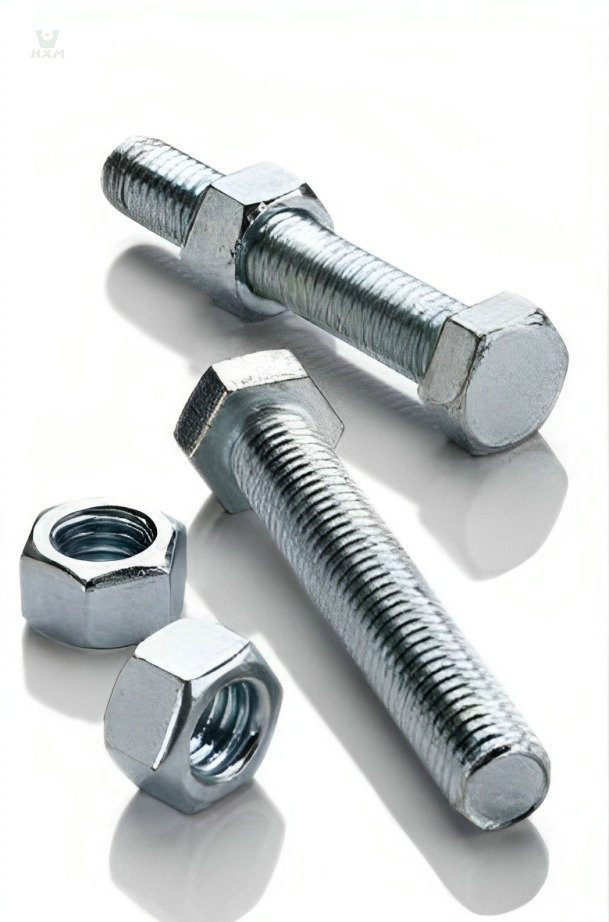
Hexagonal Nuts
Stainless steel hexagonal bars find significant application in the manufacturing of hexagonal nuts. Hexagonal nuts, known for their six-sided shape, require materials that offer high precision and excellent corrosion resistance. Stainless steel hexagonal bars fit these criteria perfectly, ensuring that the nuts maintain their shape and structural integrity under various stresses. These nuts are commonly used in a wide range of industries, from construction and machinery to automotive and aerospace, wherever secure fastening and resistance to environmental factors are essential. Their reliability and durability make them a preferred choice for critical fastening applications.
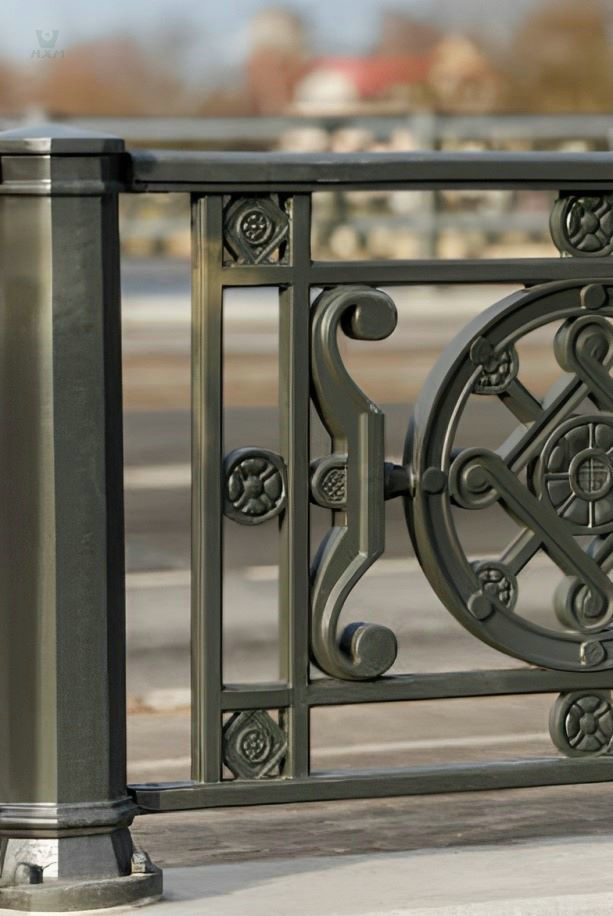
Architectural Cladding, Railings, and Decorative Features
Stainless steel hexagonal bars play a vital role in architectural cladding, railings, and decorative features. Their unique hexagonal shape and exceptional corrosion resistance make them an ideal choice for these applications. These bars are used to create intricate and visually appealing designs in architectural elements such as cladding panels, handrails, and decorative features like grilles and screens. Their durability ensures that these structures maintain their aesthetic appeal while withstanding harsh weather conditions, making stainless steel hexagonal bars a preferred material for enhancing both the functionality and aesthetics of architectural projects.
FAQ
Stainless steel hexagonal bars differ from round bars primarily in their cross-sectional shape. A hexagonal bar, as the name suggests, has a six-sided polygonal shape, while a round bar has a circular cross-section. This hexagonal shape provides some unique advantages.
First, it offers greater torsional strength, making it ideal for applications where rotational force or torque is involved. Second, the flat sides of the hexagonal bar provide better gripping surfaces, facilitating easier handling and tightening with tools like wrenches. These features make hexagonal bars preferred for various mechanical components, especially those requiring precision and stability. When sourcing stainless steel hexagonal bars, it’s crucial to ensure they meet industry standards, and consulting a reputable stainless steel bar supplier can help you make the right choice for your specific application.
The manufacturing process of stainless steel hexagonal bars involves several key steps:
Raw Material Selection: High-quality stainless steel billets are chosen as the starting material. These billets are typically made through the continuous casting process.
Hot Rolling: The billets are heated to a suitable temperature and then passed through a series of rolling mills to reduce their size and shape them into hexagonal bars. This process is known as hot rolling and requires precise control of temperature and pressure.
Annealing: After hot rolling, the hexagonal bars may undergo an annealing process to relieve internal stresses and improve their mechanical properties. Annealing involves heating the bars to a specific temperature and then slowly cooling them.
Cold Drawing: In some cases, hexagonal bars may undergo cold drawing to further refine their shape and dimensions. Cold drawing involves pulling the bars through a series of dies to reduce their size and improve surface finish.
Cutting and Finishing: The hexagonal bars are cut to the desired length and then finished to achieve the required surface quality. This can include processes like straightening, polishing, or surface treatment.
Quality Control: Throughout the manufacturing process, rigorous quality control measures are in place to ensure that the hexagonal bars meet industry standards and specifications.
Packaging and Shipment: Once the bars pass all quality checks, they are packaged securely and prepared for shipment to customers.
Stainless steel bar supplier play a crucial role in ensuring that the manufacturing process adheres to industry standards and provides customers with high-quality hexagonal bars for various applications.
Yes, stainless steel hexagonal bars can be welded, but the welding process should be carefully selected and executed to ensure the best results. The weldability of stainless steel hexagonal bars depends on their grade and specific alloy composition.
Here’s a detailed explanation:
Grade Selection: Different stainless steel grades have varying degrees of weldability. Some grades, like 304 and 316, are known for their excellent weldability, while others may require preheating and special welding techniques.
Welding Techniques: Common welding methods for stainless steel hexagonal bars include TIG (Tungsten Inert Gas) welding, MIG (Metal Inert Gas) welding, and stick welding. TIG welding is often preferred for its precision and control, especially for thin hexagonal bars.
Preparation: Proper cleaning and preparation of the hexagonal bars are essential. Any surface contamination, such as grease or oxides, should be removed to ensure a clean weld.
Shielding Gas: When using TIG or MIG welding, a shielding gas, typically argon, is used to protect the weld area from atmospheric contamination.
Heat Control: Excessive heat can distort the hexagonal bars and affect their mechanical properties. Proper heat control and post-weld annealing may be necessary to minimize distortion and stress.
Welding Filler Material: Depending on the grade of stainless steel and the specific application, you may need to select an appropriate welding filler material to ensure a strong and corrosion-resistant weld.
Quality Control: Welded joints should undergo thorough quality control, including visual inspections and non-destructive testing, to ensure the integrity of the welds.
Stainless steel bar supplier often provide guidance on the welding processes suitable for their products and can recommend specific welding techniques based on the alloy composition of the hexagonal bars. Proper welding practices are crucial to maintain the corrosion resistance and mechanical properties of stainless steel hexagonal bars after welding.
Stainless steel hexagonal bars are known for their low maintenance requirements, but some general care practices can help preserve their appearance and corrosion resistance over time. Here’s a detailed explanation:
Regular Cleaning: Clean the hexagonal bars regularly with warm water and a mild detergent. This helps remove surface contaminants, dirt, and grime. Rinse thoroughly with clean water and dry with a soft, clean cloth. Avoid abrasive cleaners or scouring pads, as they can scratch the surface.
Passivation: If the hexagonal bars are exposed to harsh environments or contaminants that could compromise their corrosion resistance, consider passivating them. Passivation is a chemical process that removes free iron and other contaminants from the surface, restoring the protective oxide layer. Consult with your stainless steel bar supplier for guidance on passivation.
Avoid Chlorides: Stainless steel is vulnerable to chloride-containing substances like salt, which can cause pitting corrosion. Minimize exposure to chlorides, especially in coastal or marine environments. Rinse off any saltwater promptly.
Protection from Physical Damage: Prevent physical damage to the hexagonal bars by avoiding impact or scratching. Depending on the application, consider using protective covers or barriers to shield the bars from potential harm.
Regular Inspections: Periodically inspect the hexagonal bars for signs of corrosion, discoloration, or surface irregularities. Catching issues early allows for timely maintenance and prevents more extensive damage.
Appropriate Lubrication: If the hexagonal bars are part of mechanical components, use appropriate lubrication to reduce friction and wear.
Temperature Considerations: In applications involving elevated temperatures, ensure that the hexagonal bars are designed to handle the heat. High temperatures can affect the mechanical properties of stainless steel.
Stainless Steel Grade: Choose the right stainless steel grade for your specific application. Some grades are better suited for high-temperature, corrosive, or marine environments.
Consult Your Supplier: Your stainless steel bar supplier can provide valuable guidance on maintenance practices tailored to the specific alloy and application. They may also recommend suitable protective coatings if necessary.
By following these maintenance practices and consulting with your stainless steel bar supplier, you can ensure the long-lasting performance and appearance of stainless steel hexagonal bars in various applications.
The price range for stainless steel hexagonal bars can vary significantly based on several factors. Here’s a detailed explanation of these factors and how they influence the price:
Stainless Steel Grade: The choice of stainless steel grade greatly affects the price. Common grades like 304 and 316 are generally more affordable, while specialized grades with enhanced properties may be more expensive.
Size and Dimensions: Larger and thicker hexagonal bars typically cost more due to the increased material and machining requirements. The specific size and dimensions you need for your project will impact the price.
Quantity: The quantity of hexagonal bars you purchase can have a substantial impact on the price. Bulk orders often result in volume discounts, making the bars more cost-effective per unit.
Finish: The finish of the hexagonal bars, such as polished, brushed, or mill finish, can affect the price. Finishing processes may add to the manufacturing cost.
Tolerance and Precision: Hexagonal bars with tighter tolerances and higher precision are generally priced higher due to the increased machining and quality control required.
Market Conditions: Stainless steel prices can fluctuate based on market conditions, including supply and demand, raw material costs, and global economic factors. Prices may vary over time.
Supplier: Different suppliers may offer varying price structures and discounts. It’s essential to obtain quotes from multiple suppliers to compare prices and services.
Customization: If you require custom specifications, such as non-standard sizes, special alloys, or unique finishes, this can increase the price as it involves additional processing and manufacturing steps.
Certifications and Standards: Bars meeting specific certifications and standards may be priced higher due to the additional testing and quality assurance processes involved.
Delivery and Logistics: Consider shipping and handling costs, especially for international orders. Shipping fees, customs duties, and delivery timelines can impact the overall price.
To determine the exact price range for your specific stainless steel hexagonal bar requirements, it’s advisable to request quotes from stainless steel bar supplier. They can provide accurate pricing based on your unique project specifications and current market conditions. Additionally, working with a reputable supplier ensures product quality and consistency.
Stainless steel hexagonal bars come in a variety of grades, each with specific properties and applications. Here’s a detailed explanation of some common grades of stainless steel hexagonal bars:
Grade 304: Stainless steel hexagonal bars of Grade 304, also known as 18-8 stainless steel, are the most widely used. They offer excellent corrosion resistance, good formability, and can be easily welded. These bars are suitable for a wide range of applications, from architectural to food processing.
Grade 316: Grade 316 hexagonal bars are known for their superior corrosion resistance, especially in marine and highly corrosive environments. They contain molybdenum, which enhances their resistance to pitting and crevice corrosion. These bars are often used in marine applications, chemical processing, and medical equipment.
Grade 410: Grade 410 hexagonal bars are martensitic stainless steels known for their excellent strength and hardness. They are often used in applications requiring high wear resistance, such as pump shafts, valve components, and certain types of fasteners.
Grade 430: Stainless steel hexagonal bars of Grade 430 are ferritic stainless steels. They offer good corrosion resistance in mildly corrosive environments and are known for their ease of fabrication. Grade 430 hexagonal bars are commonly used in decorative applications and for making household appliances.
Grade 303: Grade 303 hexagonal bars are free-machining austenitic stainless steels. They contain added sulfur or selenium, which improves machinability. These bars are often used in applications where machining precision is critical, such as in the production of screws and fasteners.
17-4 PH: This precipitation-hardening stainless steel grade offers a unique combination of high strength, corrosion resistance, and excellent machinability. It is used in applications that require both strength and corrosion resistance, such as aerospace components and certain mechanical parts.
These are just a few common grades of stainless steel hexagonal bars. The choice of grade depends on the specific requirements of your project, including the desired level of corrosion resistance, mechanical properties, and machining characteristics. When selecting a grade, it’s essential to consult with a reputable stainless steel bar supplier who can provide guidance based on your application’s needs and conditions.
other products
Get In touch
Ready to Elevate Your Projects? Dive into our Stainless Steel Collection and Submit Your Specifications Today!
Phone/WhatsApp/WeChat:
+86 13052085117
Email: [email protected]
Address: RM557, NO.1388 Jiangyue Road, Shanghai China


